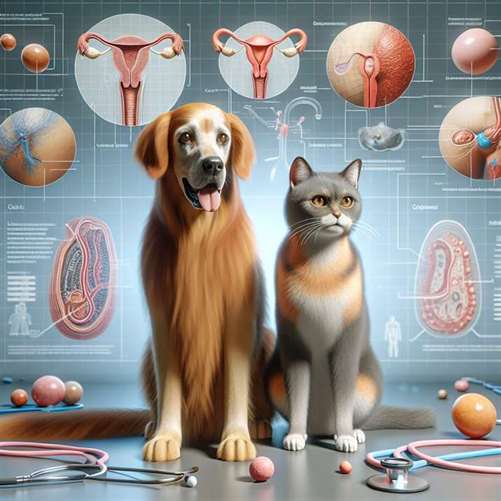All About Urinary Tract Infections (UTIs) in Cats and Dogs
Introduction
Have you ever noticed your furry friend straining to urinate or having accidents in the house? These signs could indicate a urinary tract infection (UTI), a common yet often misunderstood condition among pets. All About Urinary Tract Infections (UTIs) in Cats and Dogs is essential reading for pet owners who want to understand this health issue better. In this article, we will explore why UTIs occur, how they impact our pets, and what you can do to help your beloved companion.
As pet owners, it’s our responsibility to keep our pets healthy and happy. Understanding conditions like UTIs can help you identify problems early and seek veterinary care when necessary. Recent studies have shown that UTIs are becoming increasingly prevalent in both cats and dogs, making this topic even more relevant.
In this comprehensive guide, you will learn:
- The definition and causes of UTIs in cats and dogs
- Signs and symptoms to watch for
- Prevention and treatment options
- The importance of timely veterinary care
So, let’s dive in and discover everything you need to know about All About Urinary Tract Infections (UTIs) in Cats and Dogs. To start, let’s clarify what a UTI really is.
Learn more about common pet health issues.
What is All About Urinary Tract Infections (UTIs) in Cats and Dogs?
Definition
A urinary tract infection (UTI) refers to an infection within the urinary system, which includes the bladder, urethra, ureters, and kidneys. UTIs can affect cats and dogs, causing discomfort and potential complications if left untreated. In simpler terms, a UTI means that bacteria have invaded the urinary tract, leading to inflammation and infection.
Historical Context
Historically, veterinarians have recognized UTIs as a common issue in both cats and dogs. In the past, these infections were often misdiagnosed or overlooked due to a lack of awareness. With advancements in veterinary medicine and increased public interest in pet health, we now have better tools to diagnose and treat this condition.
The evolution of our understanding of UTIs has led to more effective treatment protocols and prevention strategies. For instance, recent research has emphasized the role of diet in maintaining urinary health, encouraging pet owners to seek out gut health for pets tips and tricks to maintain a healthy balanced diet.
The Importance of All About Urinary Tract Infections (UTIs) in Cats and Dogs
Understanding UTIs is crucial for several reasons:
- Prevalence: UTIs are one of the most common infections in pets, especially in female dogs and older cats. Awareness can help you act promptly if symptoms arise.
- Health Risks: Untreated UTIs can escalate to more severe health issues, including kidney infections, which can be life-threatening.
- Quality of Life: A UTI can cause significant discomfort for your pet. Recognizing the signs early can enhance their quality of life.
By staying informed about All About Urinary Tract Infections (UTIs) in Cats and Dogs, you can better protect your furry friends from this painful condition.

What Causes UTIs in Cats and Dogs?
Common Causes
Several factors can contribute to the development of UTIs in pets:
- Bacterial Infection: The most common cause of UTIs is bacterial overgrowth. Bacteria can enter the urinary tract through the urethra, leading to infection.
- Urinary Tract Abnormalities: Some cats and dogs may have structural abnormalities in their urinary tracts that predispose them to infections.
- Hormonal Changes: Changes in hormone levels, particularly in spayed females, can affect the urinary tract’s defenses against bacteria.
- Poor Hygiene: Inadequate cleaning around the genital area can lead to bacterial growth.
- Age: Older pets are more susceptible to UTIs due to weakened immune systems and other underlying health issues.
Risk Factors
Certain factors may increase the likelihood of your pet developing a UTI:
- Gender: Female pets are more prone to UTIs due to their shorter urethras.
- Diet: Diets high in carbohydrates may lead to urinary crystals, increasing infection risk. For tips on improving your pet’s diet, check out our guide on the benefits of pumpkin for your dog or cat.
- Dehydration: Pets that do not drink enough water may have concentrated urine, which can facilitate bacterial growth.
- Medical Conditions: Conditions such as diabetes, kidney disease, or bladder stones can increase the risk of UTIs.
Understanding the causes of All About Urinary Tract Infections (UTIs) in Cats and Dogs can help you take proactive steps to reduce the risk.
Signs and Symptoms of UTIs in Pets
Recognizing the signs of a UTI early can be vital for effective treatment. Here are some common symptoms to watch for:
Behavioral Changes
- Frequent Urination: Your pet may attempt to urinate more often than usual, producing only small amounts each time.
- Straining to Urinate: You might notice your pet straining or showing discomfort while trying to urinate.
- Accidents in the House: If your pet is house-trained, sudden accidents can be a sign of a UTI.
Physical Symptoms
- Blood in Urine: The presence of blood can indicate a severe infection and requires immediate veterinary attention.
- Strong Odor: Urine that has a strong, foul smell may suggest an infection.
- Licking Genital Area: Increased licking or grooming of the genital area can be a response to discomfort or irritation.
Other Symptoms
- Vomiting or Lethargy: If your pet seems unusually tired or exhibits signs of nausea, this may indicate a more serious issue.
- Fever: A higher than normal body temperature can signal an infection.
If you notice any of these symptoms, it’s crucial to consult your veterinarian. Early intervention can prevent complications and ensure your pet stays healthy.
Diagnosis of UTIs in Cats and Dogs
Veterinary Examination
When you bring your pet to the vet, they will perform a thorough examination, which may include:
- Medical History: Providing details about your pet’s symptoms, behavior, and any changes in their routine.
- Physical Examination: The veterinarian will assess your pet’s overall health, including checking for signs of distress.
Diagnostic Tests
To confirm a UTI, your veterinarian may recommend the following tests:
- Urinalysis: This test examines the urine for bacteria, blood, or crystals.
- Urine Culture: A urine culture can identify the specific bacteria causing the infection, guiding treatment.
- Imaging: In some cases, X-rays or ultrasounds may be necessary to check for abnormalities or urinary stones.
Understanding the diagnostic process is essential when dealing with All About Urinary Tract Infections (UTIs) in Cats and Dogs. Early diagnosis leads to prompt treatment and better outcomes.
Treatment Options for UTIs in Pets
Veterinary Treatment
Once diagnosed, your veterinarian will recommend a treatment plan, which may include:
- Antibiotics: The primary treatment for a UTI is a course of antibiotics to eliminate the bacteria causing the infection.
- Pain Management: Your vet may prescribe medications to relieve discomfort while your pet recovers.
- Follow-up Testing: In some cases, additional testing is necessary to ensure the infection has cleared entirely.
Home Care Tips
While following your veterinarian’s advice, you can support your pet’s recovery at home:
- Encourage Hydration: Ensure your pet has constant access to fresh water. This helps flush out bacteria from the urinary tract.
- Monitor Symptoms: Keep an eye on your pet’s behavior and report any changes to your veterinarian.
- Adjust Diet: Discuss dietary changes with your vet. A diet designed for urinary health can prevent future infections.
Prevention of UTIs in Pets
Lifestyle Changes
Preventing UTIs is often easier than treating them. Here are some strategies to consider:
- Regular Vet Check-ups: Annual check-ups can help catch potential urinary issues early.
- Proper Hygiene: Maintain cleanliness around your pet’s genital area to reduce bacteria buildup.
- Promote Regular Bathroom Breaks: Ensure your pet has regular opportunities to urinate, especially during warmer months.
Diet and Nutrition
A proper diet plays a crucial role in urinary health. Here are some tips:
- Opt for High-Quality Pet Food: A balanced diet can help maintain a healthy urinary tract. For more information on dietary considerations, check out our article on gut health for pets.
- Include Moisture: If your pet is prone to UTIs, consider incorporating wet food into their diet to increase fluid intake.
Lifestyle Enrichment
Keeping your pet active and engaged can also promote overall health. Explore ideas like DIY dog enrichment activities to keep your pet stimulated and happy.
Future Trends in UTI Management for Pets
As our understanding of pet health evolves, so do the strategies for
Resource Links:
- vcahospitals.com: There are several urinary tract disorders that can mimic the signs of a UTI, so it is important to do this test. The urinalysis reveals important information …
- merckvetmanual.com: Bacterial UTI is the most common infectious disease of dogs, affecting 14% of all dogs. Although UTIs are uncommon in young cats, the incidence of UTI is much …
- petmd.com: … Dr. Sandra Mitchell shares facts about cat urinary tract infections, such as cat UTI symptoms and treatment, including whether home remedies …




0 Comments